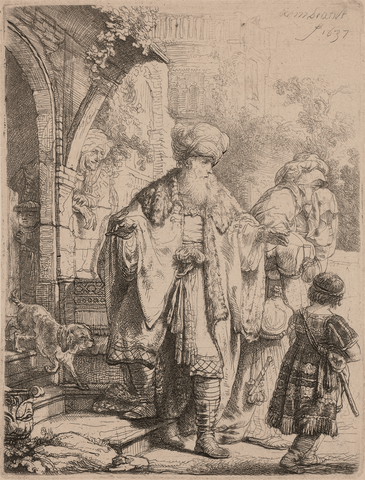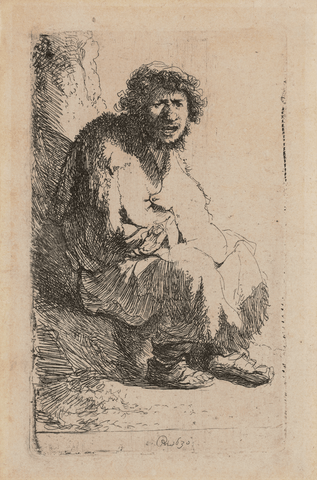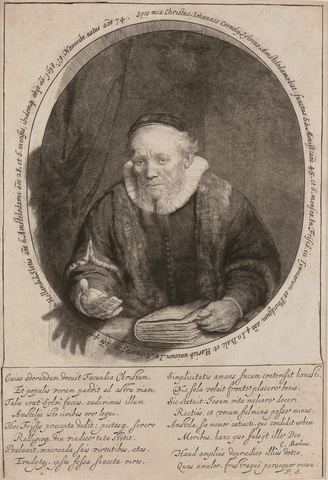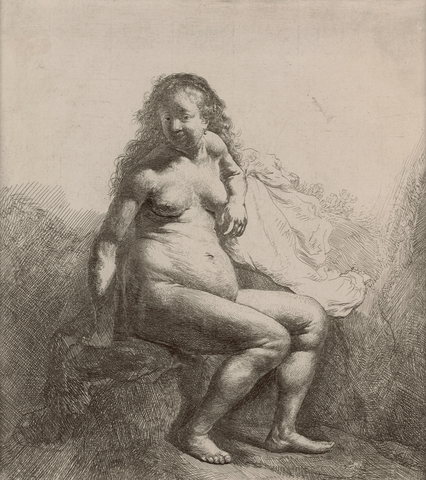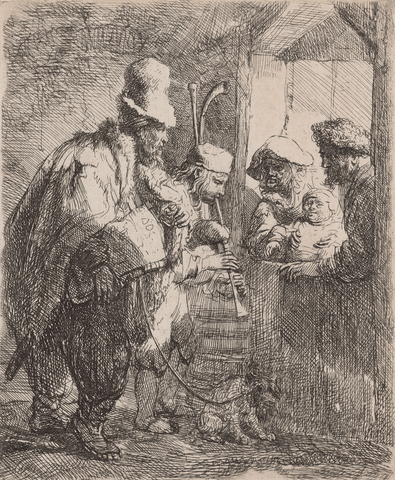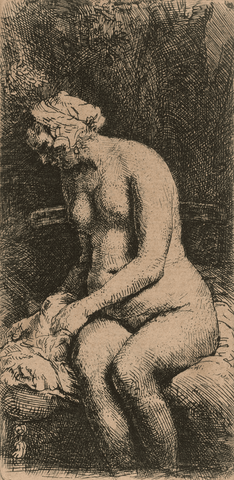Artists & Artisans
van Rijn, Rembrandt
Background
Born in 1606 in Leiden, the Netherlands, Rembrandt embarked on his artistic journey at 14, quickly establishing himself as a prodigious talent. By his late teens, he had already begun to make a name for himself as an independent artist. His early career was significantly shaped by the praise of Constantijn Huygens, secretary to the Prince of Orange, who noted Rembrandt's exceptional ability to convey emotion through gestural expression. This early recognition set the stage for a career that would span several decades and leave an indelible mark on the world of fine art.
Career Overview
In Amsterdam, Rembrandt's broad array of subjects set him apart from his contemporaries. His versatility allowed him to traverse genres effortlessly, from portraits to landscapes to historical scenes. This breadth of work attracted numerous pupils and commissions, enriching the Dutch art scene and cementing his reputation as a master painter and etcher.
Innovative New Technology
Rembrandt's engagement with printmaking was not just an adjunct to his painting but a central aspect of his artistic exploration. His innovative use of etching—a technique he refined and expanded—allowed him to experiment with light, shadow, and line in new and compelling ways. Rembrandt's prints, characterized by their rich tonal variations and expressive linework, played a crucial role in disseminating his artistic ideas beyond the confines of his studio. The use of the etching plate and laid paper in his process was revolutionary, producing some of the most exceptional examples of fine art prints.
Legacy and Later Life
Rembrandt's later years were characterized by an even deeper exploration of texture, light and composition. His late works, such as The Return of the Prodigal Son, are celebrated for their emotional depth and technical mastery. Despite facing personal and financial challenges, Rembrandt continued to innovate in his twilight years, leaving behind a legacy that would influence generations of artists.
His impact on art extends beyond his own works. Rembrandt's contributions to the field of printmaking, particularly etching, were revolutionary. His experimental approach to the medium—manipulating ink, printing plate, and press—expanded the possibilities of etching, bridging the gap between traditional printmaking and painting. Rembrandt etchings and art prints are considered masterpieces, with many original Rembrandt works displayed in major museums. Enthusiasts are able to visit the Rembrandt House Museum, once his studio and art dealership, in Amsterdam to view a large collection of his work of not only paintings and drawings, but also almost all of his etchings.
Today, original Rembrandt etchings are highly sought after by collectors and art dealers. These works showcase his exceptional skill and mastery of the medium. Institutions like the British Museum and the Morgan Library hold extensive collections of his etchings and drawings, highlighting their importance in art history. Explore our selection of original Rembrandt etchings for sale at M.S. Rau. Contact us today for more information.
Artists & Artisans
van Rijn, Rembrandt
Background
Born in 1606 in Leiden, the Netherlands, Rembrandt embarked on his artistic journey at 14, quickly establishing himself as a prodigious talent. By his late teens, he had already begun to make a name for himself as an independent artist. His early career was significantly shaped by the praise of Constantijn Huygens, secretary to the Prince of Orange, who noted Rembrandt's exceptional ability to convey emotion through gestural expression. This early recognition set the stage for a career that would span several decades and leave an indelible mark on the world of fine art.
Career Overview
In Amsterdam, Rembrandt's broad array of subjects set him apart from his contemporaries. His versatility allowed him to traverse genres effortlessly, from portraits to landscapes to historical scenes. This breadth of work attracted numerous pupils and commissions, enriching the Dutch art scene and cementing his reputation as a master painter and etcher.
Innovative New Technology
Rembrandt's engagement with printmaking was not just an adjunct to his painting but a central aspect of his artistic exploration. His innovative use of etching—a technique he refined and expanded—allowed him to experiment with light, shadow, and line in new and compelling ways. Rembrandt's prints, characterized by their rich tonal variations and expressive linework, played a crucial role in disseminating his artistic ideas beyond the confines of his studio. The use of the etching plate and laid paper in his process was revolutionary, producing some of the most exceptional examples of fine art prints.
Legacy and Later Life
Rembrandt's later years were characterized by an even deeper exploration of texture, light and composition. His late works, such as The Return of the Prodigal Son, are celebrated for their emotional depth and technical mastery. Despite facing personal and financial challenges, Rembrandt continued to innovate in his twilight years, leaving behind a legacy that would influence generations of artists.
His impact on art extends beyond his own works. Rembrandt's contributions to the field of printmaking, particularly etching, were revolutionary. His experimental approach to the medium—manipulating ink, printing plate, and press—expanded the possibilities of etching, bridging the gap between traditional printmaking and painting. Rembrandt etchings and art prints are considered masterpieces, with many original Rembrandt works displayed in major museums. Enthusiasts are able to visit the Rembrandt House Museum, once his studio and art dealership, in Amsterdam to view a large collection of his work of not only paintings and drawings, but also almost all of his etchings.
Today, original Rembrandt etchings are highly sought after by collectors and art dealers. These works showcase his exceptional skill and mastery of the medium. Institutions like the British Museum and the Morgan Library hold extensive collections of his etchings and drawings, highlighting their importance in art history. Explore our selection of original Rembrandt etchings for sale at M.S. Rau. Contact us today for more information.
